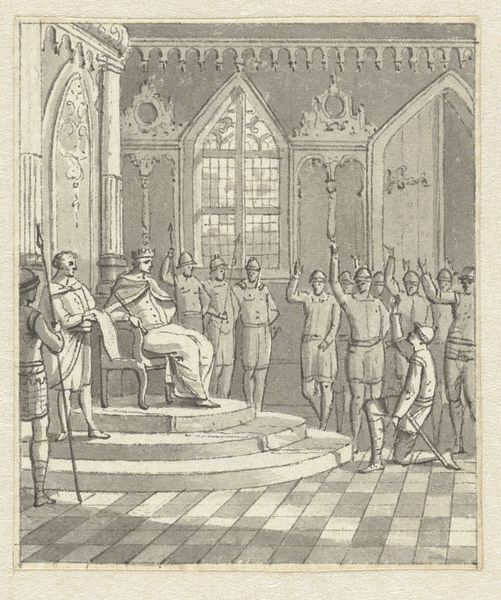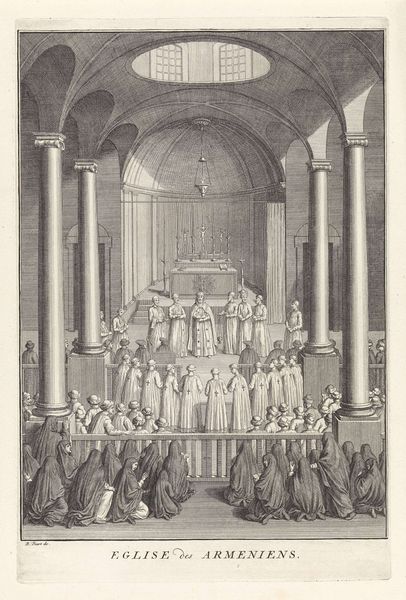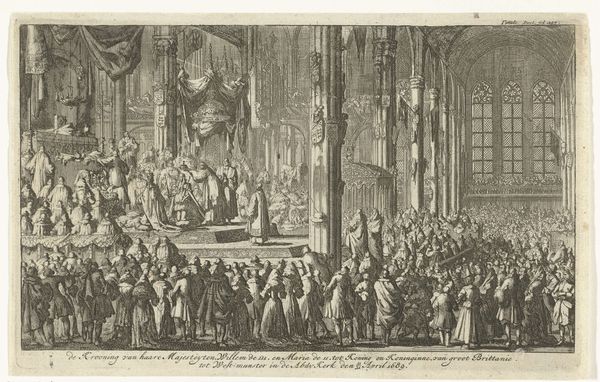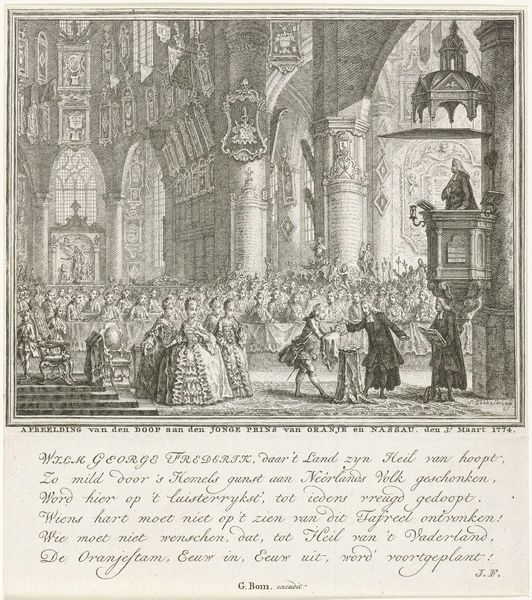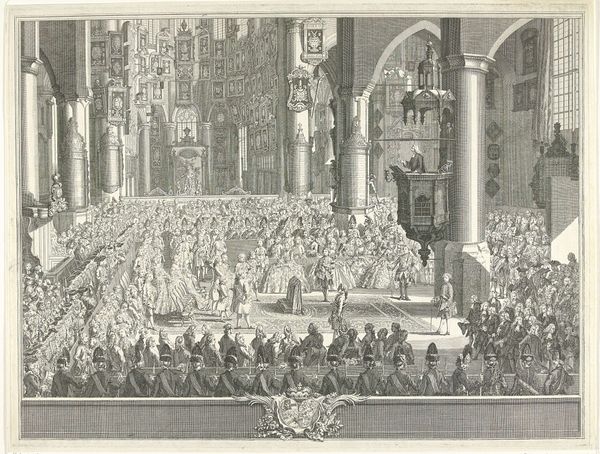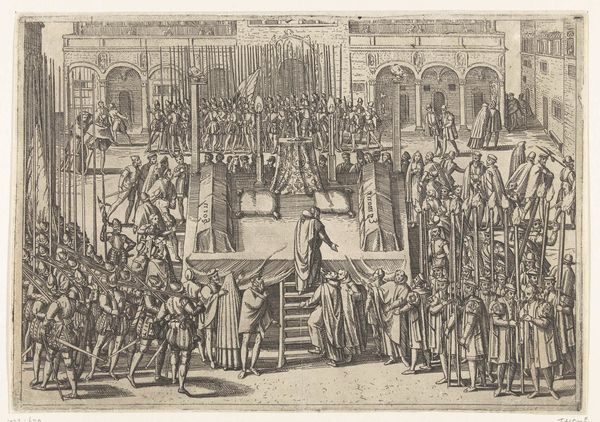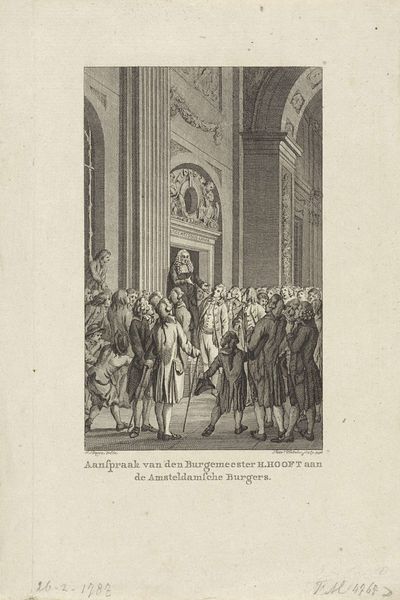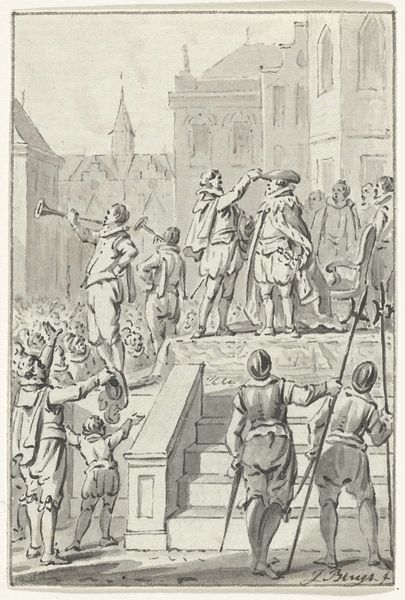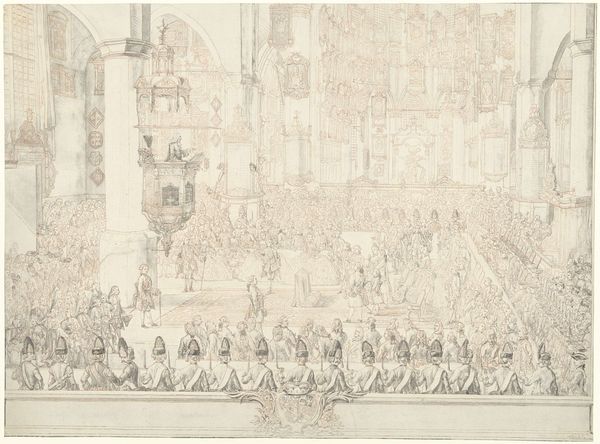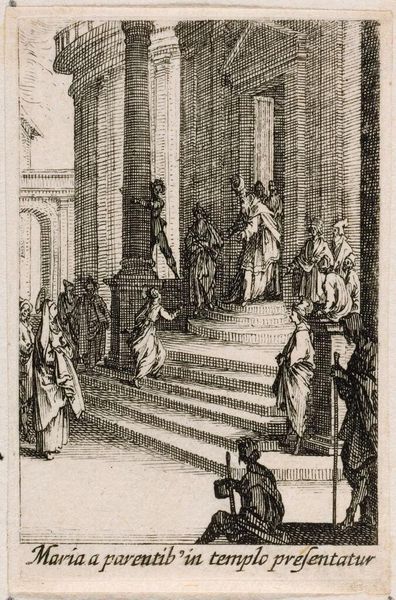
Dimensions: height 65 mm, width 55 mm
Copyright: Rijks Museum: Open Domain
Curator: Before us is "In 't Jaar 1767," a drawing rendered in ink on paper, likely created between 1789 and 1810, although its author remains anonymous. The artwork resides here at the Rijksmuseum. Editor: Immediately, I'm struck by the composition. The artist has used subtle gradations of grey ink to create a powerful contrast, drawing the eye upward from the regimented soldiers in the foreground to the preacher in the elevated pulpit. The starkness of the scene is palpable. Curator: Absolutely. I think that regimentation is key here, don't you? Notice how the artist is presenting a layered societal structure; the lower class is composed of soldiers with a higher class gathering closely together, while authority, whether spiritual or political, stands above them. A comment perhaps about the intersection of power, faith, and military might? Editor: An intriguing interpretation. Structurally, the linear precision defining the soldiers' uniforms and the pulpit's architecture creates a sense of order and rigidity. Observe how these lines intersect and converge, guiding our sight. It's a complex interplay of geometrical elements. Curator: Which resonates powerfully when you look at what that era meant for governance in the Dutch Republic, in general; rising merchant classes and shifting hierarchies clashing against the backdrop of late baroque tradition. Consider how genre paintings began showing these intersections. Editor: And technically, there’s real beauty in the economy of the lines used. With so few strokes of ink, the artist evokes the weight of stone and the texture of cloth. Look, too, at the variations: dark washes delineate the shadows under the pews and lighter strokes define architectural detailing above the congregation. Curator: It really places one within the milieu. Considering how artworks that have survived without signatures can offer some of the most potent viewpoints into our social histories. Editor: A testament to how art transcends individual authorship. I’m glad to consider it from these perspectives. Curator: Indeed, analyzing it together grants new perspectives for all of us.
Comments
No comments
Be the first to comment and join the conversation on the ultimate creative platform.
